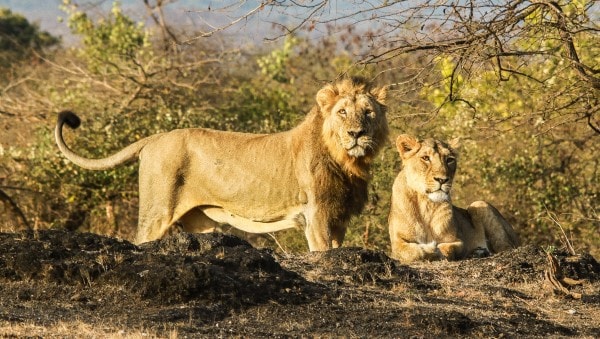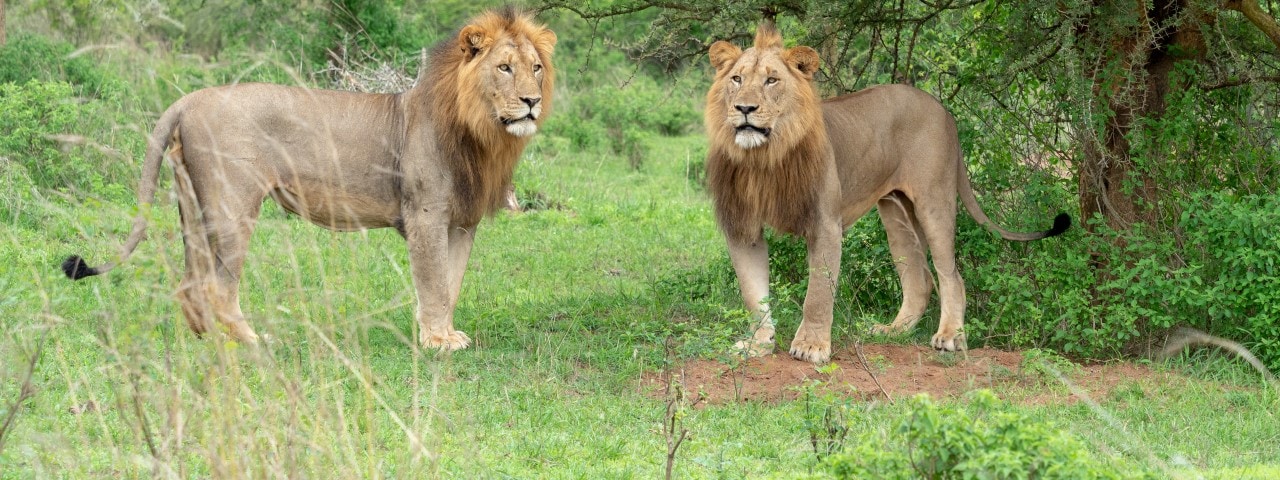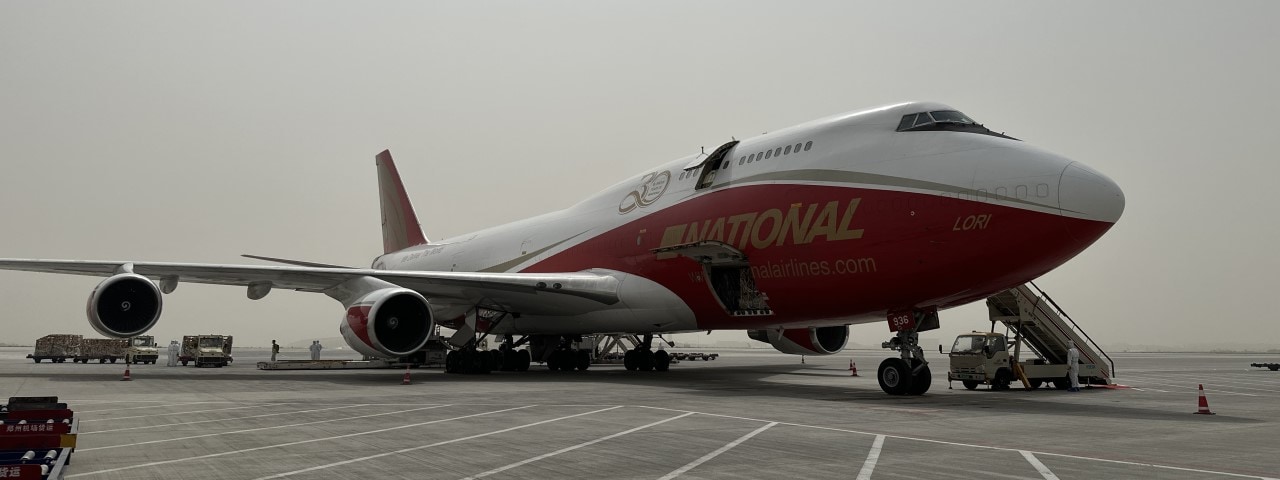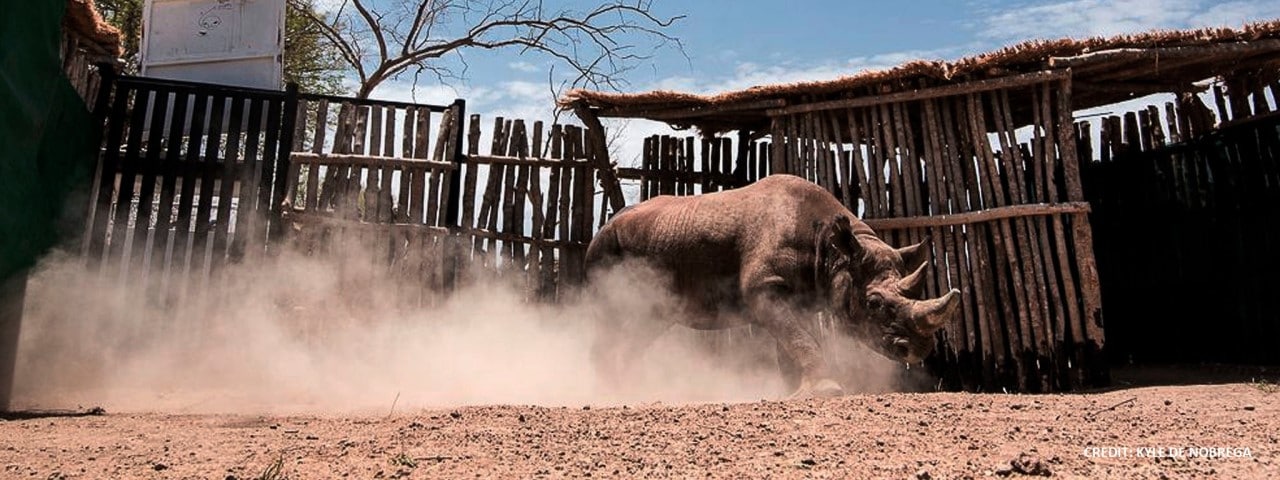How we arrange aircraft charters for animals
From livestock to exotic animals, we’ve helped transport all sorts of animals over the years. But what kind of planning goes into executing these air charters? And how do we safeguard the animals’ welfare in transit?
We spoke to two of our cargo directors, Francois Vermeulen in Johannesburg and Oscar Liu in Beijing, about the complexities of these charters and how we adhere to international and domestic animal transport regulations.
The request
“Before doing any planning, we investigate where the request is coming from and why the animals are being moved,” explains Francois. “In the case of exotic animals, we adhere to the framework set out in the CITES treaty (Convention on International Trade in Endangered Species of Wild Fauna and Flora), which ensures the international trade of wild animals and plants doesn’t threaten the survival of the species.
“We’re very careful about what we agree to do, which is why we typically only move exotic animals for conservation reasons. If we feel the request is coming from a party that isn’t – or won’t be – compliant with international and domestic animal transfer regulations, we decline to arrange the charter.”
“Once we’ve done our initial due diligence, we set to work providing the client with a variety of charter options and explain why we’ve chosen each one so they can make an informed decision,” says Oscar. “Our clients often have little or no experience in moving animals by air, so we do a lot of research to safeguard the animals’ welfare during transportation.”
The charter
“We take every professional care possible to provide a smooth and comfortable journey, from sourcing the ideal aircraft to fully briefing crew members and arranging onboard experts to accompany the animals,” Oscar continues.
“Every animal requires tailored and specialised care. Some need to be moved in crates that keep them upright throughout the journey, while others need regular onboard attention to keep them calm during the flight.
“We typically have an ACS representative stationed at the departure airport to ensure the animals are loaded correctly, while another is present when the aircraft lands to ensure quarantine procedures are completed before swiftly transporting them to their final destination. Having more than 30 offices around the world certainly helps with this and Francois and I have worked together on animal charters before.”
“No matter what animal we’re moving or which office is taking the lead, we always make sure each charter is meticulously planned,” Francois adds. “From the type of crate used to which operator we partner with, a lot of organisation and work goes into each one.
“We even do our utmost to have contingency plans in place. For example, we’ll typically choose an operator with more than one aircraft in their fleet to avoid the charter being cancelled at the last minute due to an aircraft needing maintenance.”
Which animals have we transported?
“Over the last 30 years, ACS has helped transport all sorts of animals, from bears to dolphins,” says Francois. “We’ve played a major role in arranging the movement of livestock like goats and sheep, as well as numerous exotic species including giraffes, hippos, pelicans, hyenas and buffalo.
“We recently assisted in the relocation of 16 southern white rhino from South Africa to Garamba National Park in the Democratic Republic of the Congo (DRC). Part of a ground-breaking effort to restore the ecological balance of one of Africa's oldest national parks, this mission required months of planning and close communication with African Parks.
“We decided a Lockheed L-100 Hercules was the best fit for the job because of its rear-loading and short runway capabilities, however, the airstrip at the desired destination was too small to accommodate the aircraft. Complicating things even further, two flights were needed as each rhino weighed two tonnes or more.


“Through careful planning, we re-routed the charter to a larger airport nearby and were able to pull off both flights in the same week, with each one being loaded at night and arriving at first light in Kibali to avoid the midday heat. The translocation was a complete success and the southern white rhino can now begin to boost the rhino population in the DRC.
“While that charter was certainly a highlight of 2023, my favourite animal-related charter involved transporting seven wild lions from South Africa to Rwanda, where they’d been extinct since 2000. There are now reported to be over 58 lions residing in Akagera National Park and it’s so rewarding to know our efforts helped reintroduce them.”
To learn more about how we transport animals of all shapes and sizes, or to talk to an expert about moving an animal by air, contact your local ACS office today.

 From livestock to exotic animals, we’ve helped transport hundreds of animals over the years. Cargo directors Francois Vermeulen and Oscar Liu explain what planning goes into these air charters and how we ensure the welfare of the animals in transit.
From livestock to exotic animals, we’ve helped transport hundreds of animals over the years. Cargo directors Francois Vermeulen and Oscar Liu explain what planning goes into these air charters and how we ensure the welfare of the animals in transit.




